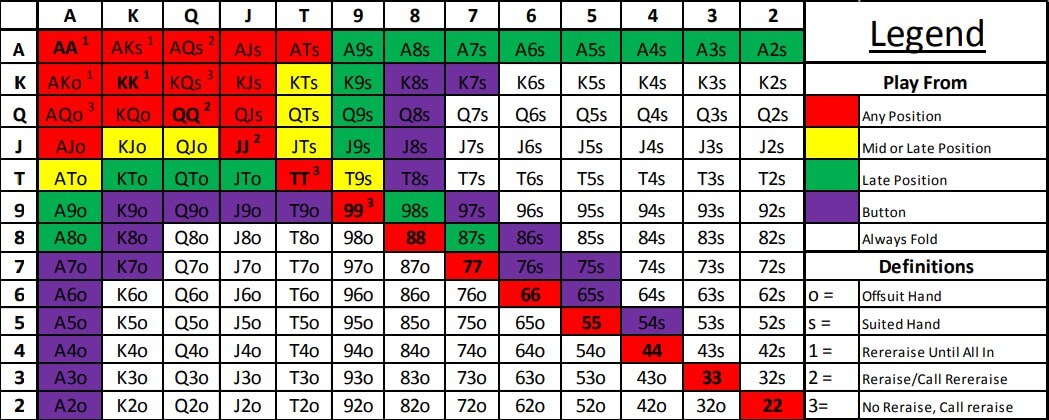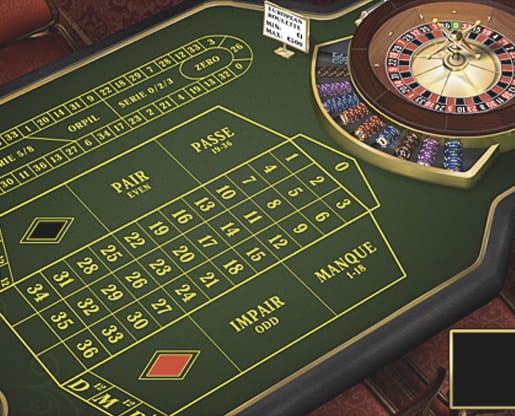Texas Holdem Chancen Average ratng: 3,7/5 1857 reviews
In Texas Hold’em a hand where aces, kings and queens pair up preflop is very rare. At a 9 player table this scenario unfolds roughly every 17,000 hands. The odds are 1:16,830 and the probability is 0.006%. Queens does happen every now and then, for example during this hand at the Bike. The world's most trusted Texas hold'em poker odds calculator. Improve your poker or find out just how bad that bad beat was. Texas Hold'em Poker probabilities. When calculating probabilities for a card game such as Texas Hold'em, there are two basic approaches. The first approach is to determine the number of outcomes that satisfy the condition being evaluated and divide this by the total number of possible outcomes.
- Poker Texas Holdem Chancen Berechnen
- Texas Holdem Chances
Playing poker is about playing the odds. The following list gives the odds for outcomes in Texas Hold’em hands. When you realize how heavily the odds are stacked against you, you may want to rethink going all-in before the flop with two suited cards. Use the odds to your advantage:
Poker Texas Holdem Chancen Berechnen
1 percent (1-in-100): Percentage of time that no player holds an Ace or a King at a table in a 10-handed game
1 percent (1-in-100): Percentage of time that if you hold two suited cards, you’ll flop a flush
6 percent (about 1-in-20): Percentage of time that five community cards will give pocket suited cards a flush
6 percent (about 1-in-20): Percentage of time that you’ll be dealt a pocket pair
8 percent (about 1-in-12): Percentage of time that you’ll hit at least trips after having a pair on the flop
12 percent (about 1-in-8): Percentage of time that you’ll flop trips if holding a pocket pair
12 percent (about 1-in-8): Percentage of time that two more cards will flop in the same suit as a suited pocket pair
19 percent (about 1-in-5): Percentage of time that the five community cards will at least trip your pocket pair
32 percent (about 1-in-3): Percentage of time that you’ll pair one of your cards on the flop (with no pocket pair)
33 percent (about 1-in-3): Percentage of time that you’ll make a full house or better after having trips on the flop
35 percent (about 1-in-3): Percentage of time that you’ll make a flush on the turn or river if you have four cards to a flush after the flop



Texas Holdem Chances
Texas Hold'EmOmaha Hi/Lo7-Card StudPoker Hand RankingsPai GowDouble Hand PokerUltimate Texas Hold'EmBaccaratEZ BaccaratThree Card PokerPure 21.5 Blackjack | GEGA-001519
In Holdem (a.k.a. Texas Holdem), each player receives two cards face down. Five community cards are then turned face-up upon the table. Holdem has structured betting; i.e. the betting is 'split limit' (example: 3-6 limit indicates a $3 wager for the 'lower' limit and a $6 wager for the 'higher' limit), with the smaller limit occurring during the first two (2) betting rounds and the higher limit occurring during the final two (2) betting rounds. Spread limit games may be offered.
| - Holdem is played using a standard 52-card deck. The object is to make the best high hand among competing Players using the traditional ranking of poker hands.
- A Dealer Button is used to indicate the Player who, in theory, dealt the cards for that pot. The button is the last to receive cards on the initial deal and has the right of last action on all betting rounds except the first.
- Method of Play: Blinds are posted as in many other poker games; i.e. the first two players after the Dealer Button post a wager before the cards are dealt, a small blind and a large blind. The large blind is equal to the 'lower' betting limit, with the small blind being less than the large blind. In the 3-6 limit game described above, the large blind would be $3 and the small blind $1.
- Each player is dealt two cards; face down, one at a time, in rotation in turn.
- A round of betting ensues for players who wish to continue and contend for the pot, where players have the option to fold, call, or raise.
- Three cards are turned face up in the middle of the table. These are commonly called the 'flop'.
- A round of betting ensues for players who wish to continue and contend for the pot, beginning with the first active player after the Dealer Button. Betting for this round is at the 'lower' limit.
- A fourth card is turned next to the initial three. (Fourth Street/'The Turn'). Betting for this and subsequent betting rounds are at the 'higher' limit.
- A round of betting ensues for players who wish to continue and contend for the pot, beginning with the first active player after the Dealer Button.
- A fifth and final card is turned next to the previous four. ('The River Card') These five cards are common to all active players.
- A final round of betting ensues, beginning with the first active player after the Dealer Button.
- All active players expose their hands, beginning with the first player initiating action (a bet, raise, or a check if there was no bet) on the final betting round. Using the best of their personal two cards and the five community cards, the active player with the best five carded High Hand is awarded the pot. Players may use two, one or none (playing the board) of their personal cards to form their hand.
- Collection: The collection will be taken from the pot.
|
|


